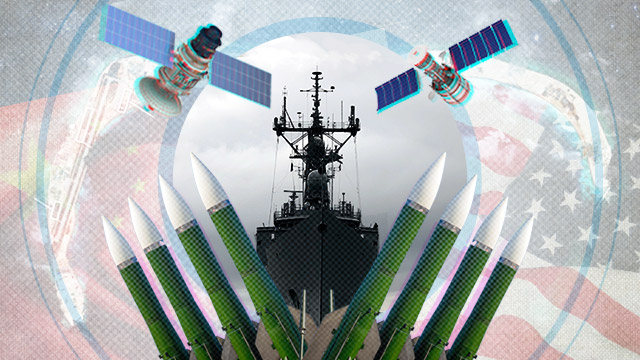

Early this month, two United States Navy missile-guided destroyers sailed within 12 nautical miles off Mischief Reef, one of 7 man-made islands built by China in the disputed South China Sea, challenging Beijing’s excessive maritime claims in the East Asia and Pacific region.
China’s claims are not recognized under international law after the Philippines won its case in July 2016 in the Permanent Court of Arbitration in The Hague, which questioned the legality of China’s nine-dash-line demarcation.
However, the government of President Rodrigo Duterte has yet to assert its sovereign rights over the disputed territory, particularly in Mischief Reef, which is locally known as Panganiban Reef and well within the country’s 200 nautical mile exclusive economic zone.
Brunei, Malaysia, Vietnam, and Taiwan, which China considers a renegade province, also have conflicting claims on the strategic waterway where about $3 trillion worth of sea-borne trade pass every year. The South China Sea is also a rich fishing ground and is widely believed to have large deposits of oil and natural gas.
Since U.S. President Donald Trump was elected into office in November 2016, the United States Navy has stepped up its “freedom of navigation operation” patrols (Fonops) in the South China Sea, increasing tension between the world’s two powerful military and economic nations.
During the administration of Barack Obama, when China began building artificial islands, the United States Navy conducted only 6 Fonops despite his “rebalance of Asia” policy as Washington realized the real military and economic competition for global supremacy is in Asia.
Under Trump, U.S. Navy guided-missile destroyers had done 10 Fonops from 2017, including two operations in the first two months of the year. China, which has been protesting these patrols, has aggressively responded to US Fonops when it’s People’s Liberation Army (PLA) Navy destroyer Lanzhou nearly collided late last year with the American destroyer Decatur near Gaven and Johnson Reefs.
Shifting tactics
Beiing has shifted tactic from monitoring, shadowing and issuing warning against Washington’s warships to threatening to ram the vessels to force them to alter course and move away from the artificial islands. These islands, after all, are now virtually military bases with secured ports, airfields and missile platforms.
The U.S. and China’s shadow play in the South China Sea has increasingly made littoral states in the region nervous because of the potential accidents, like ship and aircraft collision, which could start a minor conflict in the area.
But it appears that the rivalry between the United States and China has gone beyond air and maritime space after Pentagon’s Defense Intelligence Agency (DIA) issued last month a report, “Challenges to Security in Space,” assessing Russia and China’s space capabilities and their threats to American’s interests.
The report is an eye-opener as it showed what China is capable of doing in the South China Sea, putting at risk not only the United States, which conducts Fonops, but all other states patrolling the waterway, including Australia, Japan, and now Great Britain, India and Russia.
On page 19 of the 46-page document, the DIA report said that “the People’s Liberation Army (PLA) owns and controls about half of the more 120 ISR (Intelligence, Surveillance and Reconnaissance) and remote sensing satellite fleet” orbiting the planet, capable of “monitoring, tracking and targeting U.S. and allied forces worldwide, especially throughout the Indo-Pacific region.”
This could mean that the U.S. Navy Aegis missile-guided destroyers on Fonops are at risk of being hit accurately by anti-ship missiles directed by Chinese satellites.
“These satellites also allow the PLA to maintain situational awareness of potential regional flashpoints, including the Korean Peninsula, Taiwan, and the South China Sea.” the DIA report said, stressing that the number of Chinese satellites watching from the sky is second only to the United States.
China's eavesdropping
China also owns and operates over 30 communication satellites, including 4 dedicated to military use, increasing Beijing’s capability to eavesdrop on anyone in the world. It is now “testing multiple next-generation quantum-enabled communications, which supply the means to field highly secure communication systems,” the report said, propelling China to the forefront of the global satellite communications industry.
Before the DIA report was made public in January 2019, the world was awed by the satellite images made available by Asia Maritime Transparency Initiative (AMTI) on China’s island-building activities as well as presence of warships and fishing boats in the South China Sea.
Now, the world knows China can match those AMTI photographs, probably with better resolution than grainy images, sometimes, published by the international and local media. And for the Philippines, the Chinese satellite capabilities added a new dimension to the country’s external security challenges.
Recently, there were reports in the local media, based on AMTI imagery, about a large flotilla of Chinese militia boats deployed around Pagasa island (internationally known as Thitu island, the largest of 9 features occupied by the Philippines in the South China Sea), as Manila was busy building a beach ramp in order for equipment and supplies to move in to repair an airstrip which the sea is fast eating up.
The militia boats were sent to monitor the construction activities, but could be a cover for other Chinese activities in the area as there had been attempts by Beijing to occupy a sandbar very close to Pagasa island last year.
Top defense and military officials have thought of sending troops to occupy and protect the sandbar but former foreign affairs secretary Alan Peter Cayertano cautioned the defense and military establishments against blowing up the problem.
If China had advance satellite systems monitoring the Spratly, why would Beijing need dozens of militia boats around Pagasa? Probably to put pressure on the Philippines to halt its minor repairs and small reclamation activities.
Perhaps it’s also one way to show how a great power would treat a puny country, sending militia boats instead of frigates and destroyers. China is reserving its more sophisticated and modern platforms for an equally capable power.
Well, let’s see if the U.S. and China duel moves to the next level, from the air and sea to space – the real star wars. – Rappler.com
A veteran defense reporter who won the Pulitzer in 2018 for Reuters' reporting on the Philippines' war on drugs, the author is a former Reuters journalist.